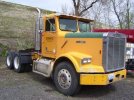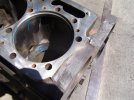Truck Shop
Senior Member
Because another posted about installing cam bearings in a 3406 B Cat engine, I thought I would post this
about installation. The Cat uses a cam bearing that has a groove machined into the outside diameter so
oiling holes can be installed slightly off center of oil port in block and still be fine. Cummins is the opposite,
the bearing has no groove, the groove is machined into cam journals. So when installing oil port holes need
to be on the money, although the oil ports/rifles in block are larger, so there is leeway. The bearings are
numbered to placement in the block, I index mark the block and bearing with a paint pen, double check
alignment and drive them home. Below after installed, showing cam journal with groove and test fit.
Cam fit perfect.
*
I am going to run a short thread while I build this engine, It might run a while because I'm in no hurry, and
the guy who bought it is in no hurry either. When done it should produce 465 to 475 hp.
*
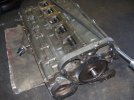
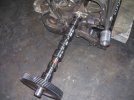
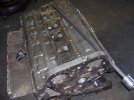
about installation. The Cat uses a cam bearing that has a groove machined into the outside diameter so
oiling holes can be installed slightly off center of oil port in block and still be fine. Cummins is the opposite,
the bearing has no groove, the groove is machined into cam journals. So when installing oil port holes need
to be on the money, although the oil ports/rifles in block are larger, so there is leeway. The bearings are
numbered to placement in the block, I index mark the block and bearing with a paint pen, double check
alignment and drive them home. Below after installed, showing cam journal with groove and test fit.
Cam fit perfect.
*
I am going to run a short thread while I build this engine, It might run a while because I'm in no hurry, and
the guy who bought it is in no hurry either. When done it should produce 465 to 475 hp.
*




